This Is How I Grow Full-Sized Lettuce Without a Garden Or Allotment
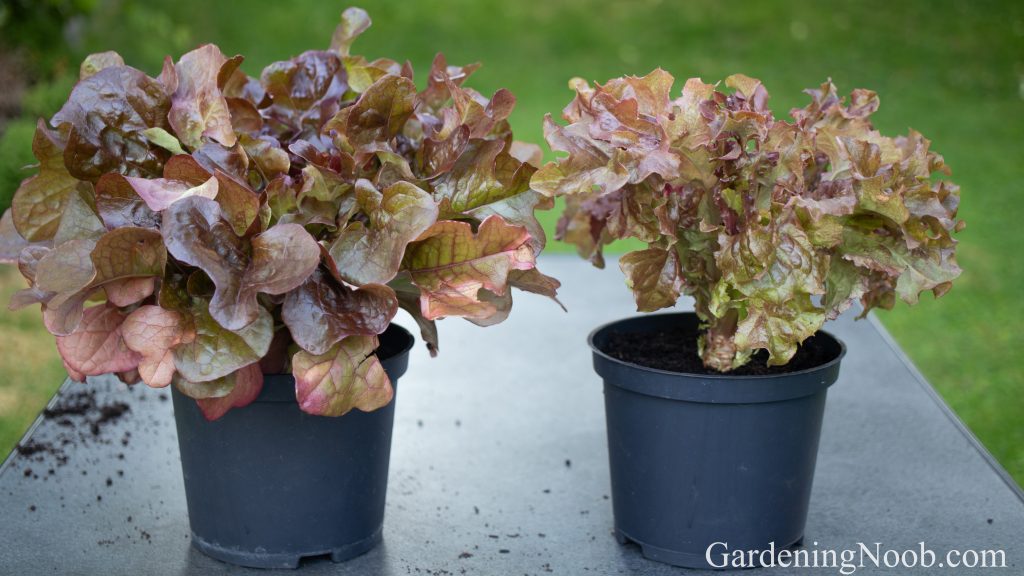
If you are short on garden space and thinking of growing lettuce in pots, I can tell you from experience: it not only works, it works surprisingly well!
I didn’t set out to grow lettuce this way, though. I did it because I had no choice. You see, in 2023, we lost the allotment where we grew most of our food. The owner decided not to rent it out anymore. And just like that, we went from over 100 square meters of growing space to three small garden beds by the house. One of them is permanently filled with strawberries…
So, I had to adapt. I turned to container gardening. And one of the first vegetables I tried was lettuce. To my surprise, it did just fine. It grew just as fast and just as full as it did in the garden.
The truth is, this leafy green is easier to grow in pots than most people think. As long as you get a few key things right. Below, I will show you exactly how I do it, including the small details that make a big difference.
Grow It In Spring Or Autumn
Lettuce is a cool-season vegetable. It thrives when the days are shorter and the temperatures are cool. And it tends to struggle in hot, summer-like weather. The best time to plant and grow it is thus in early-to-mid spring or in early-to-mid autumn. That is when I plant and grow mine. And it does great!
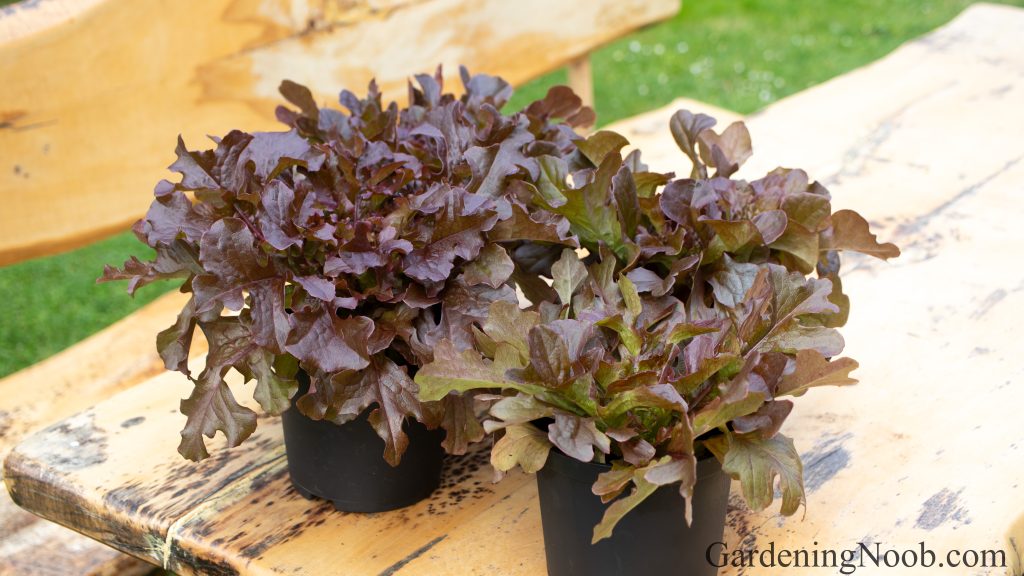
Early in spring, when the days are short and sunlight is limited, I always place the pots in a sunny spot. However, later in spring and early in summer, I avoid full sun all day, because at that point, too much heat and sunlight can cause it to flower (a process called bolting), which affects both the taste and leaf growth.
I never place the pots on the lawn. Or even near the lawn. I always keep them on a hard surface, like a balcony or patio. This helps prevent slugs and snails from finding the plants easily. At first, I place the pots right next to each other. But once the leaves get bigger and start growing past the edges of the pots, I space them out a bit, so the leaves don’t overlap too much between plants.
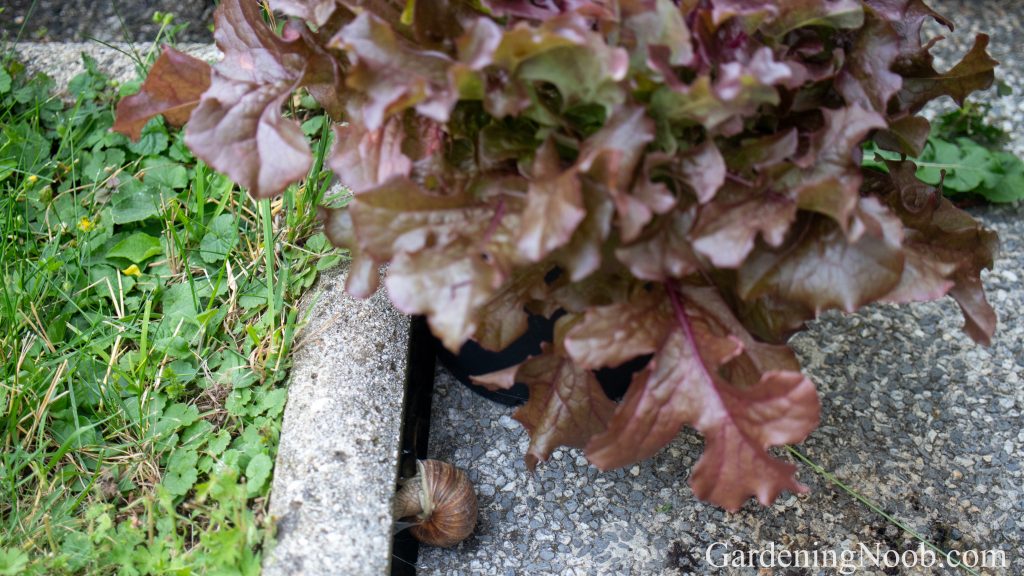
Start It From Seed. Or Buy Transplant-Ready Seedlings
I like to start all my vegetables from seed. And lettuce is no different. It takes more time and more work (since you have to sow the seeds and up-pot the seedlings at least once), but it is cheaper, and honestly, I love it. I never get tired of watching how a seed sprouts and turns into a strong, healthy seedling…

Of course, there is nothing wrong with buying seedlings from a plant nursery or garden centres. In fact, it is more conventient. You skip the early steps and go straight to transplanting into the final pot. It costs a bit more, but you can get to harvest stage at least one month faster!
Choose Heat-Tolerant Varieties That You Can Pick Early
As far as variety goes, leaf types (not the head-growing ones) are generally easier to grow. You can start picking them young. And they tend to regrow quickly, which is great if you are after multiple harvests.
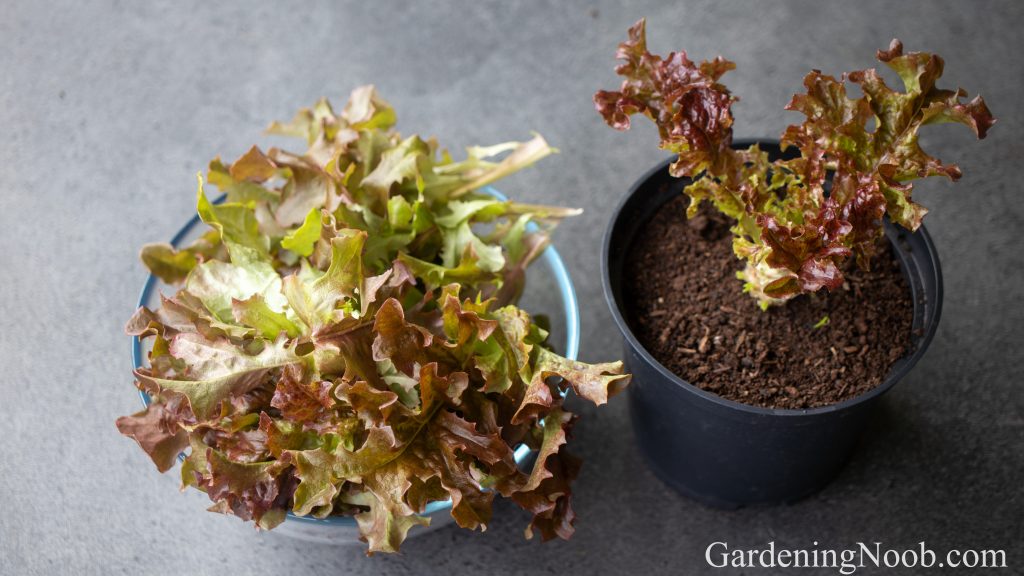
The one I have grown the most is oakleaf lettuce. It is a looseleaf variety that is ready to pick early. It is also quite tolerant of hot weather. That means it won’t start flowering after the first hot (summer-like) day, which gives you a longer and more reliable harvest window.
But do not let the variety stop you from trying. It does not matter whether it is looseleaf, head, spring or autumn type of lettuce. What matters is that you go out and grow it.
My Go-To Potting Mix For Healthy And Fast Leaf Growth
You want your lettuce to grow fast, especially if you plan to harvest it multiple times using the so-called cut-and-come again method. Otherwise, there is a risk it will start flowering (bolting) before it ever reaches full size. And the thing that will help you get that strong, steady leaf growth is the potting mix.
Here’s the one I use and it works like a charm:
- Three parts quality potting soil. Use something organic that is well-broken down, with a bit of fertilizer in it.
- One part earthworm castings. It is an all-around, organic fertilizer that keeps the plants fed without burning them.

Give Each Lettuce Its Own Large-Enough Pot
The first time I tried growing lettuce in containers, I used small pots – about 10 cm wide and 8 cm deep. I planted one plant per pot, but they just did not have enough space to fully develop. They started out well, but it wasn’t long before they hit a wall and stopped growing.
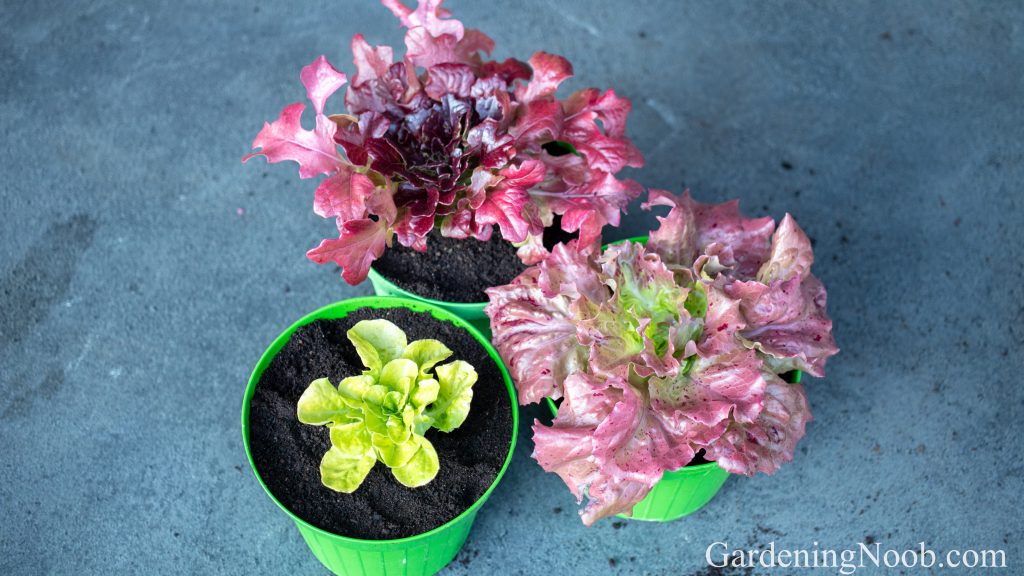
Then I switched to 1.5 litre pots, and that worked out perfectly. Still one plant per pot, but now each one had enough room to grow to full size. That is what I use now.
In the future, I might try growing it in slightly smaller pots. And chances are I will get away with it, because the potting mix I use is extra rich in nutrients. The only problem I see with pots smaller than 1.5 litres is watering…
Why I Use Nursery Pots For Container-Grown Lettuce
I use the plastic (nursery-kind) pots simply because they are practical. They have multiple drainage holes which is important for preventing root rot, especially early in spring when humidity is high.
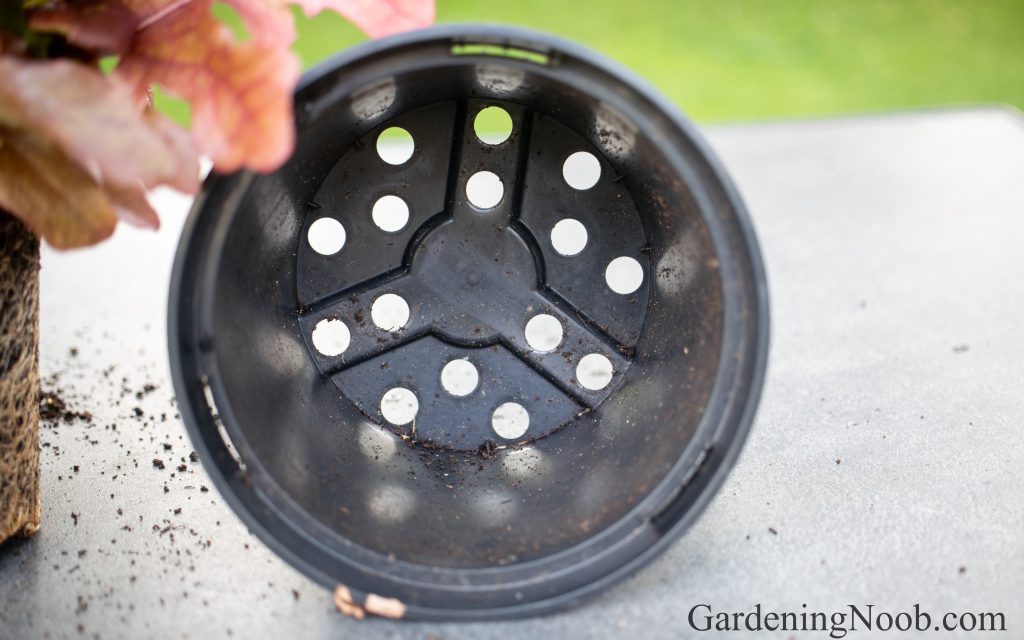
If you care about aesthetics, clay or decorative pots are fine too, but only if they have proper drainage. Otherwise, I would recommend placing a plastic pot inside the decorative one. That way, you stay on the safe side and still keep things looking good.
Don’t Underestimate The Watering
You see, the smaller the pot, the faster it dries out, and the more often you have to water – especially when the days get longer and hotter. There is less of a safety margin, more chance you won’t be there when the soil dries out. And if that happens, you lose all your plants. Permanently.
And speaking of watering, you need to do it quite often. In early spring, not so much. But as the weather warms up, especially on sunny days, you will need to water daily. A good soak usually lasts a day. Maybe a day and a half. But two days without water? That is asking for trouble.
Harvest It Before It Is Too Late
The thing about lettuce (and I have mentioned this earlier) is that it tends to flower (bolt) when the days get long and hot. Those conditions force it to stop producing new leaves and start sending up flower stalks. The taste turns bitter, the leaves get tough and woody, and the plant becomes inedible…
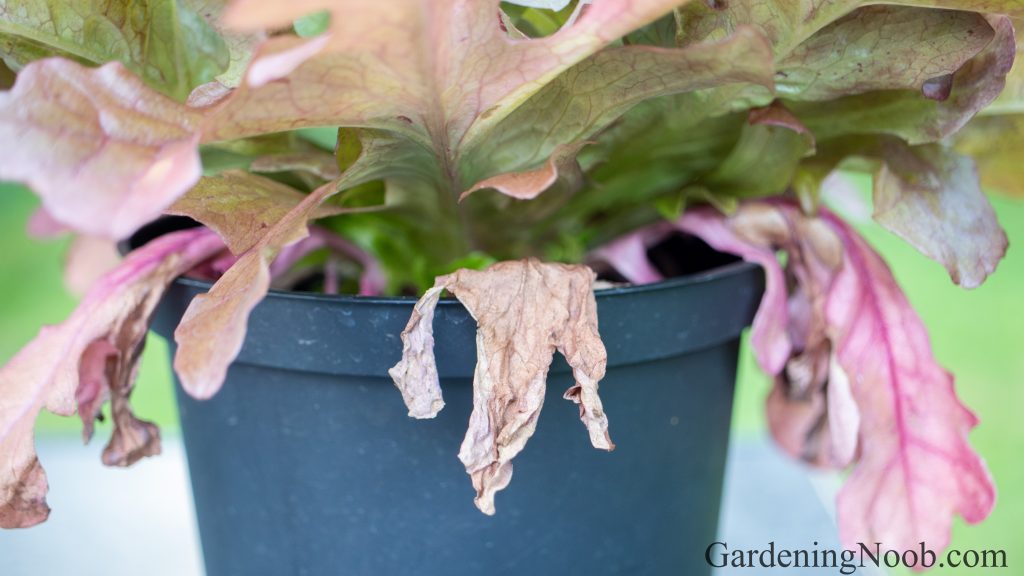
So, my advice is simple: harvest as soon as it is nearly full size. Earlier is better than later. Because sooner or later, it is going to bolt. And once it does, your harvest window closes. At that point, all you can really do is compost it or keep growing it for seed. But eating it? Probably not.
I like to harvest it using the cut-and-come-again method because it gives me the best of both worlds:
- One nearly full harvest (I leave a few inner leaves so it can regrow).
- And the chance for a second round of fresh growth.
If it does not bolt after that first harvest, that is great, we get one more round of harvest from the same plant. And if it does, that is fine too. I already got what I was after.

If I Can Do It Without A Garden Or Allotment, So Can You
That is it. You can see that the secret to growing full-sized, harvest-ready lettuce in pots is simple. Grow it at the right time, give it enough sunlight, enough space, and steady nutrients. Do those things right, and you will always have plenty of lettuce available. Even without a garden!
